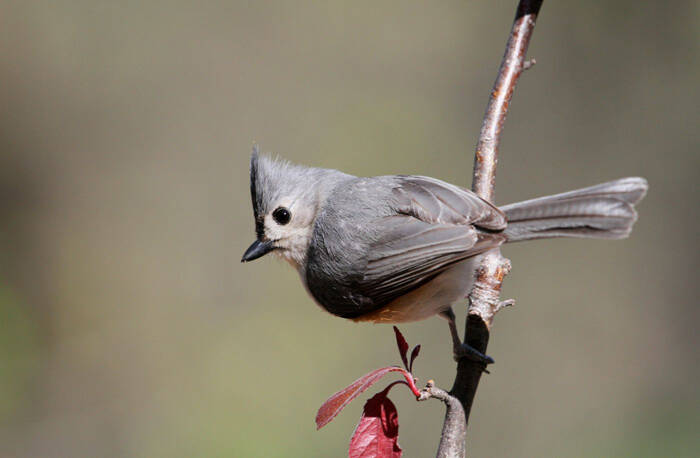Sinosuthora przewalskii
IUCN
LCBasic Information
Scientific classification
- name:Sinosuthora przewalskii
- Scientific Name:Sinosuthora przewalskii,Rusty-throated Parrotbill,Paradoxornis przewalskii
- Outline:Songbird
- Family:Passeriformes Oriole Parus
Vital signs
- length:13-14cm
- Weight:About 15g
- lifetime:No verification information
Feature
The grey feathers on the top of the head and the rest of the body contrast sharply with the reddish-brown forehead, eyeliner and brows, hence the name.
Distribution and Habitat
The Grey-crowned Burrow is a bird endemic to China and is only found in Gansu (Minxian, Zhuoni, Zhouqu) and Sichuan (Jiuzhaigou County, Qingchuan County, Pingwu County).
Appearance
The male and female feathers are similar in color. The forehead is dark brown or dark reddish brown, and the top of the head to the back of the neck is gray; the eyes are dark brown or dark reddish brown first, and there is a long dark reddish brown or dark brown eyebrow line, from the forehead edge above the eyes and above the ear feathers back to the pillow. Among them, the eyes are narrower and lighter in color, and after passing above the eyes, they become thicker and wider, and the color is darker; the eyes are brown, the ear feathers and the side of the neck are smoky gray, and the base of the ear feathers is decorated with brown. The front part of the back is olive yellow, especially the shoulder and upper tail coverts are brighter. Some upper backs are olive gray, and the lower back, shoulders, waist and tail coverts are dark olive, especially the shoulders and waist are brighter. The tail is olive gray with bright outer feather edges. The upper wing coverts and flight feathers
Details
Rusty-throated Parrotbill is a small bird of the family Oriole and the genus Parrotbill, with no subspecies.

The Grey-crowned Parrotbill was named by Berezovsky and Bianco in 1891 based on the specimens collected by the Russian Central Asian Expedition in southern Gansu Province in 1886. As of 2007, only four distribution points were known, namely Minxian, Zhuoni, Zhouqu in Gansu and Jiuzhaigou in Sichuan; the records in Gansu were all from 1886, and it has not been found in Gansu for more than 100 years. From March to May 1986 to 1988, birdwatchers in China and abroad reported that small groups of Grey-crowned Parrotbill were observed in the arrow bamboo groves near the "Swan Sea" in Jiuzhaigou Nature Reserve, but there was no video record. Therefore, the Grey-crowned Parrotbill has always been considered the rarest passerine bird in China, and its specimens only exist in Russia.
The Grey-crowned Parrotbill is a resident bird. Grey-crowned jaybill mainly inhabits coniferous forests, mixed coniferous and broad-leaved forests and bamboo groves at an altitude of 2000-3500 meters. It also inhabits sparse forests, shrubs and grass at the edge of the forest. It often moves and forages on low branches of shrubs or in grass under the forest. It is active and lives in small groups in reed fields, or in sparse grasslands and shrubs at the edge of the forest.
Grey-crowned jaybill mainly feeds on insects and plant fruits and seeds. The communication call is a short beep, with a sharp high-pitched "trr-trr-trr-trr...tsit-tsit-tsit...trr-trr-trr...tsit-tsit-tsit-it...".
The Grey-crowned Crowbird nests in dense Fargesia denudata under sparse mixed forests of Abies faxoniana and Betula albo-sinensis. The nest site is 2,700 meters above sea level, located on a steep sunny slope close to the tree line. The nest is a finely structured cup-shaped nest, about 6.6 cm high and 5.0 cm deep, with an inner diameter of 4.8 cm and an outer diameter of 7.0 cm. The nest is woven from dry grass leaves and bamboo leaves, and the outer wall of the nest is decorated with a lot of green moss. On 10 June 2013, two parents were observed foraging within 20 m of the nest site, returning alternately to feed the chicks, with a 4-5 minute interval between each feeding; the nest was checked again on 19 June (9 days later) and found to be intact, but with no chicks inside, presumably having flown away.
Based on an assessment of known records, abundance, and range size, the Grey-crowned Hooded ... Since the late 1960s, Sichuan's forest cover has declined rapidly due to logging, reclamation and grazing. Most temperate forests have disappeared. The periodic flowering and death of bamboo, coupled with the fragmentation of temperate forests, may affect its population.
Listed in the "IUCN Red List of Threatened Species" (IUCN 2016 ver 3.1) - Vulnerable (VU).
Listed in the "National List of Terrestrial Wildlife with Important Economic and Scientific Research Value" issued by the State Forestry Administration of China on August 1, 2000.
Listed in the "List of National Key Protected Wildlife in China" first level.
Protect wild animals and stop eating game.
Maintaining ecological balance is everyone's responsibility!








